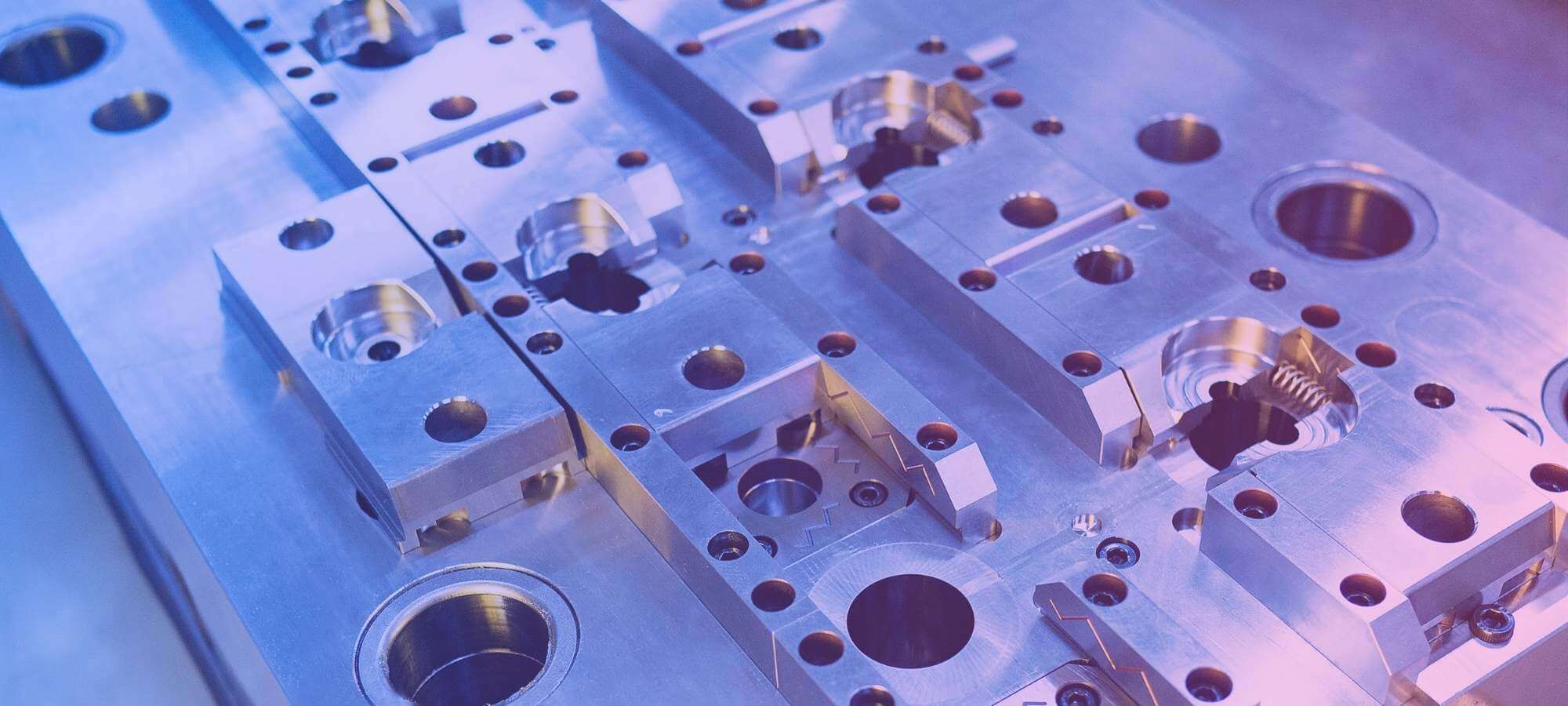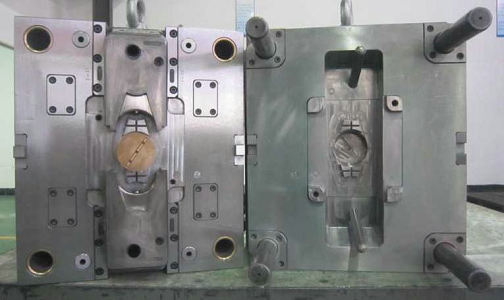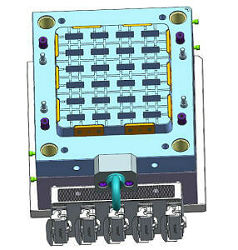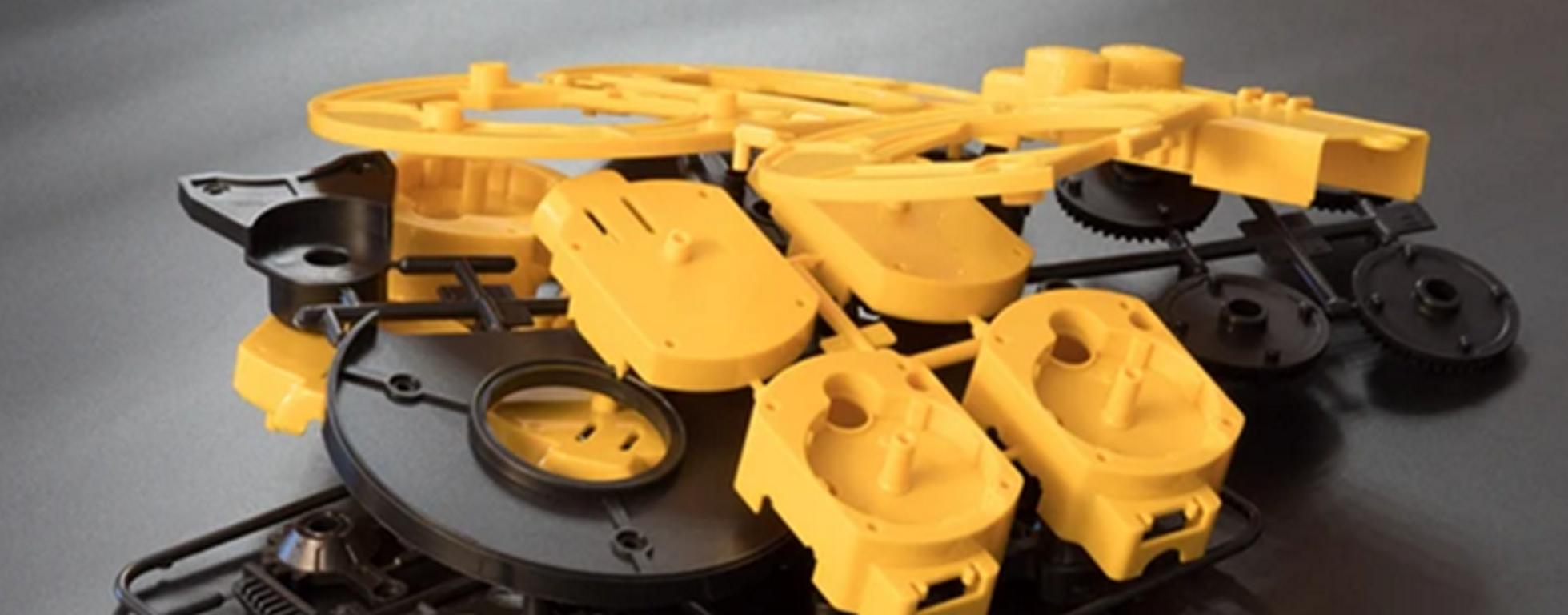In modern industrial production, mold is an important technology used in shaping products (including metal products and nonmetal products) for all of the industries. Meanwhile, it is the ‘magnifying glass of efficiency and profit’ to the raw material and equipment, because the value of the final product made in the mold is often tens of, even hundreds of times as valuable as that of the mold itself.
The mold industry is the basic industry of the national economy, and it is called ‘the mother of industry’. Every aspect of human life such as clothes, food, housing, and transportation is closely connected with the mold industry. Therefore, the level of injection mold technology has been a significant symbol to measure a country’s developing level of mechanical industry.
And mold can be divided into two kinds of them: mold for metal products and nonmetal products.
The metal products mold include cold-press mold, pressing mold, forging mold, press casting mold, precise casting mold, stamping tool, punch tool, and dust metallurgy mold, etc. These kinds of mold have extensive apply-cation in electrode-cranial products, automobiles, aviation instruments, and other metal products.
The nonmetal products include plastic injection mold, ceramic mold, rubber mold, glass mold, food mold, and ornament mold. These kinds of molds have extensive apply cation in our lives, at this page we are talking about injection mold. this is the most papular modern technology which used in our life everywhere.
An injection mold used to form a plastic product using the injection molding process. A standard injection mould is made of a stationary or injection side containing one or more cavities and a moving or ejection side.
The resin, or raw material for injection moulding, is usually in pellet form and is melted by heat and shearing forces shortly before being injected into the mould. The channels through which the plastic flows toward the chamber will also solidify, forming an attached frame. This frame is composed of the sprue, which is the main channel from the reservoir of molten resin, parallel with the direction of the nozzle, and runners, which are perpendicular to the direction of the nozzle and are used to convey molten resin to the gate(s), or point(s) of the gate and feeding the molten material into the mold cavity. The sprue and runner system can be cut off and recycled after molding. Some moulds are designed such that it is automatically stripped from the part through the action of the mould. For example, the submarine gate or banana gate, if using hot runner systems then there will be no runners.
The quality of the injection molded part depends on the quality of the mould, the care taken during the moulding process, and upon details of the design of the part itself. It is essential that the molten resin is at just the right pressure and temperature so that it flows easily to all parts of the mold. The parts of the injection mold must also come together extremely precisely, otherwise small leakages of molten plastic can form, a phenomenon known as flash. When filling a new or unfamiliar mould for the first time, where shot size for that particular mould is unknown, a technician should reduce the nozzle pressure so that the mold fills, but does not flash. Then, using that now-known shot volume, pressure can be raised without fear of damaging the mould. Sometimes factors such as venting, temperature, and resin moisture content, can affect the formation of flash as well.
Injection Mold Material
Traditionally, molds have been very expensive to manufacture therefore they were usually only used in mass production where thousands of parts are being produced. Injection Molds are typically constructed from hardened steel or aluminum. The choice of material to build a mold is primarily one of economics. Steel molds generally cost more to construct, but their longer lifespan will offset the higher initial cost over a higher number of parts made in the mold before wearing out. Aluminum molds can cost substantially less, and when designed and machined with modern computerized equipment, can be economical for moulding hundreds or even tens of parts.
Requirements for the injection mold
ejection system
An ejection system is needed to eject the molded part from the cavity at the end of the molding cycle. Ejector pins built into the moving half of the mold usually accomplish this function. The cavity is divided between the two mold halves in such a way that the natural shrinkage of the molding causes the part to stick to the moving half. When the mold opens, the ejector pins push the part out of the mold cavity.
cooling system
A cooling system is required for the mold. This consists of an external pump connected to passageways in the mold, through which water is circulated to remove heat from the hot plastic. Air must be evacuated from the mold cavity as the polymer rushes in. Much of the air passes through the small ejector pin clearances in the mold. In addition, narrow air vents are often machined into the parting surface; only about 0.03 mm (0.001 in.) deep and 12 to 25 mm (0.5 to 1.0 in.) wide, these channels permit air to escape to the outside but are too small for the viscous polymer melt to flow through.
Use of plastic injection molding
Plastic injection molding is the most common and widely used method for the mass production of plastic products around the world because of its convenience and ease of use. Plastic products made using this method include plastic chairs and tables, electronic product covers, disposable spoons and knives, and other cutlery products.
History of injection molding
Plastic injection molding was started by European and American chemists who were experimenting with plastics. Originally done manually and pushed into the mold using Parkesine, it turned out to be too brittle and flammable. John Wesley Hyatt is the official inventor of plastic injection molding, and this process has a rich history with a brilliant spirit.
Injection molding was originally invented to solve the problems that billiard players face abundantly. The 19th-century billiard balls were made of ivory derived from tusks taken from elephants. Celluloid was one of the first plastics used to make billiard balls.
Instructions for the procedure
The scientific procedure used to produce plastic products by applying injection molding is very simple. Your plastic melts and is put into a huge syringe. It is then placed in a suitably shaped mold depending on the product being manufactured and allowed to cool for a sufficient amount of time to reach the desired shape. However, the actual process of actual injection molding is not so simple and can be broadly divided into three subdivisions: injection unit, molding section and finally clamp. The plastic pellets are gradually liquefied and gradually injected into the injection unit through a tunnel that is completely melted until it reaches the front of the barrel. When it reaches the mold, it cools and hardens to the desired fixed shape. The mold will then return to the original machine position.
All injection molded parts start with plastic pellets with a diameter of a few millimeters. They can be mixed with certain limited amounts of pigments called “colorants” or up to 15% recycled material. The mixture is then fed into an injection molding machine. Early molding units used a plunger to push down from above. However, the outer area was hot or cold and the melting process did not work properly. The solution to this was a reciprocating screw. This was often seen as the most important contribution that was none other than a revolution in the plastic product manufacturing industry. The screws cause the shear stress necessary to melt the plastic, and the rest of the heat comes from the traditional heater band that surrounds the machine. When molten plastic is injected into the mold, the air is released through the sideways vents. The honey viscosity plastic is so thick that it cannot be released from these vents, which are only a few microns wide.
Engraving witness marks on plastic products is also an important part of marketing. This is because we need to be able to authenticate and verify the authenticity of the product by looking for a line separate from the witness mark. These are created using removable inserts and can prove very helpful in tracking defects.
If you are looking for injection mould and injection molding parts?
You are welcome to send us your requirement for quote, you will have our competitive price within two working days.
If you have injection mold technical question?
You are welcome to contact our technical Manager to solve your technical issue by steve@sinceretechs.com.
We have over 15 year working experience with 15 years skilled technical English communication.
Your project will be successful with our supporting, we guarantee your satisfaction.
What are you waiting for? Contact with us you will not lose anything buy have your technical issue solved.
Injection Mould China for your market
When it comes to injection mold manufacturers china, there are a number of misconceptions that people typically have. One of the biggest misconceptions is the sense that an operation that is being conducted in China is one that is largely unreliable. This cannot be further from the truth. In fact, this is an extremely reliable operation that is based in China and is turning out products that are of high quality. In order to fully understand this, it is equally important to understand the history of this type of operation as well as its current status.
What makes this particular operation better than those that have come before it? In the past, the the hallmark of operations of this type were that quality was sometimes not consistent and sometimes quality barely existed at all. This is especially true of some of the operations that were conducted in China. As a result, people started to have their fair share of doubts about whether or not plastic mould injection operations within the country of China could produce products of reasonable quality. Fast forward to today and those questions have been answered.
In truth, today’s operation is quite reliable and very successful. The reliability issues have been successfully put aside and any questions about quality have them put to rest long ago. Today’s operation distributes products to multiple international customers and is able to produce virtually any type of moulded plastic product for any use. The entire system utilizes a state of the art process, using the latest software to design the products that are ordered and then mass produce them as quickly and efficiently as possible. All of this is done without compromising quality in any way, shape or form.
The best part about it all is that the mistakes that were made throughout the early history of such operations has been taken into account in order to ensure that those types of issues do not happen when products are produced today. In fact, there are more than 15 years worth of operations from which to gain experience and perfect the way that everything is handled ranging from the way that orders are taken to the way that they are produced and shipped out. The fact that software is used to create virtually any type of product minimizes the chances for errors and allows everything to move along very rapidly. The end result is that the only limitation on the types of products that can be produced is the imagination of the individual who is ordering the product in the first place.
In addition, each product gets its own project manager and everything can be produced at a cost that is more than reasonable. This helps to proliferate these types of operations and even though the system is based in China, high quality products are produced each and every day which are then shipped out to locations all over the world. Imagine virtually any plastic mold part such as those parts used for calculators, DVD players or printers, and they can probably be traced directly back to operations of this type. Without them, it would be virtually impossible to operate in the world the way it is understood today.
Why Choose China Plastic Injection Molding Service?
China is well known as a manufacturing center and as an exporter of plastic products. Chinese plastic injection molding manufacturers guarantee high-quality products that are reliable and long-lasting, there are many plastic molding companies in China, it is a headache for you to find a right China mold maker from that huge resource, Sincere Tech is one of the top ten best plastic mold and molding companies in China, we offer you the 100% satisfied quality and service, go to our home page by https://plasticmold.net/ to know more.
All of the information we referred from Wikipedia, but we sort out together for easy to read, if you want to know more, please go to injection mold Wikipedia.
If you want to know more information about products made from injection mold china company? You are welcome go to our home page to know more, or send us email,we will reply you with 24 hours.





















